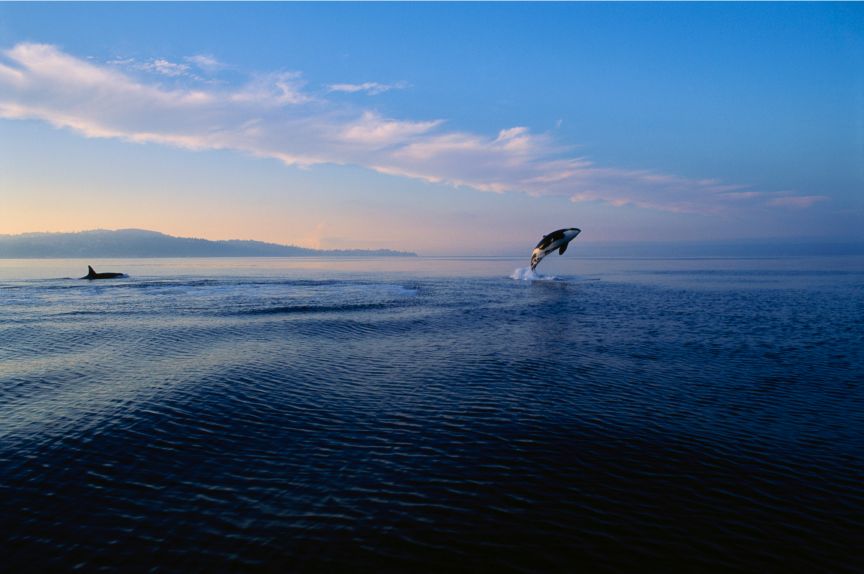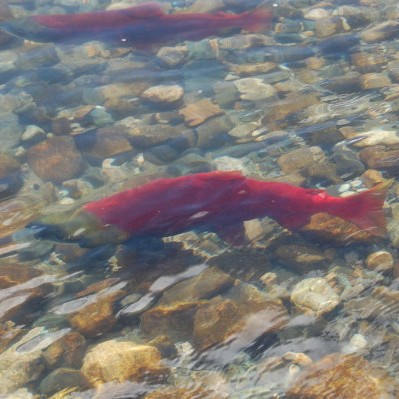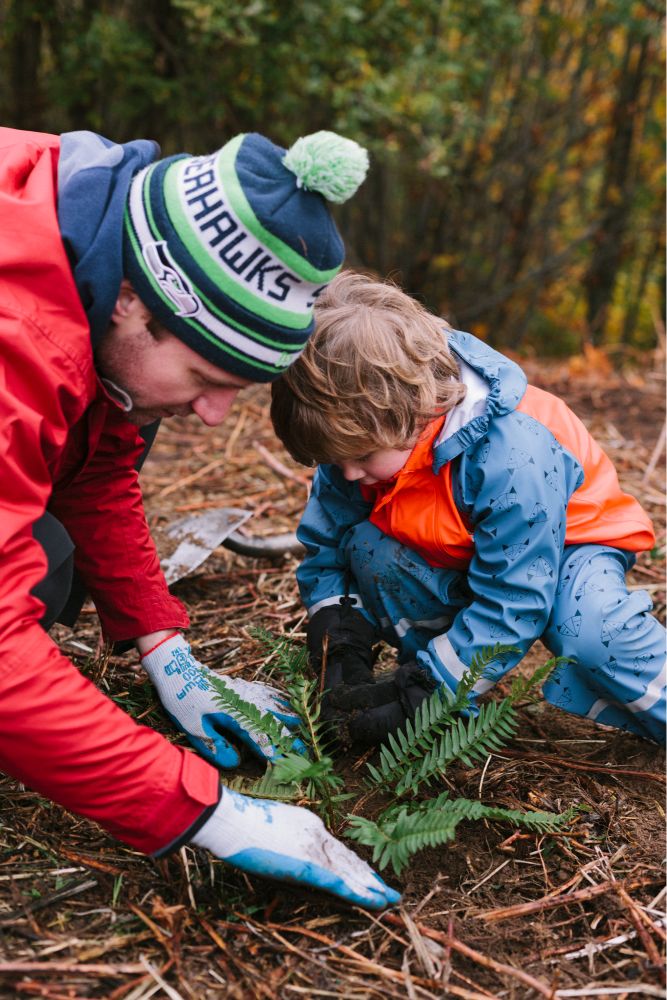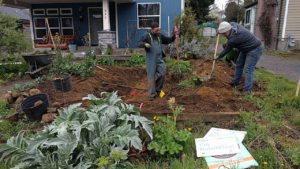Everything is connected from the tree tops to the whales’ flukes.

How is your work as a volunteer supporting the health of our local Southern Resident orcas?
This is a question we should be considering, especially during June, which is Orca Action Month. Recent media stories have highlighted the plight of our Southern Resident orcas and describe how they are struggling to survive. Understanding how our collective actions and efforts are connected to the health of these whales, the salmon they depend on and the ecosystems that support all of us – its important to remain focused and hopeful for the future.
Who is our community of whales?

This matrilineal family of endangered orcas is made up of three distinct pods which now only number 75 members. Over the centuries, they have become finely integrated in the ecological web of life dependent on Chinook salmon, unpolluted water and the nutrient rich saltwater of the Salish Sea. These are also critical requirements of the five salmon species that inhabit our local streams, creeks and the Green-Duwamish River – cool, clean water, native plant habitat for foraging and safety and gravel stream beds.
Why is Their Survival Threatened?
NOAA Fisheries identified three main threats to Southern Resident orcas when they were listed as endangered in 2005:
- Significant decline of their principal food source, Chinook salmon – in large part due to degradation of salmon and forage fish habitat
- Noise and disturbance from ships and small boats – which affect their ability to echolocate, communicate, and forage
- Pollutants/chemicals – with 75% of pollutants in Puget Sound coming from stormwater runoff, which are inhibiting orcas’ ability to maintain their health and raise healthy young
How can forest stewardship help?
 We work in a highly urbanized area where loss of native habitat, pollutants from stormwater runoff and climate change are major challenges not only to the health of our communities, but to our salmon and orcas too. The work that our Green Seattle stewards and volunteers accomplish in our parks help in:
We work in a highly urbanized area where loss of native habitat, pollutants from stormwater runoff and climate change are major challenges not only to the health of our communities, but to our salmon and orcas too. The work that our Green Seattle stewards and volunteers accomplish in our parks help in:
- Connecting habitat corridors and riparian zones, allowing salmon more access to spawning areas
- Lessening stormwater runoff by capturing it through green infrastructure methods
- Restoring habitat, especially planting trees which help to filter air pollutants and cool our streams, creeks and rivers by providing needed shade
- Educating volunteers on these critical issues
We all work in many different natural areas throughout the Seattle area from traditional park settings to wild, natural areas, so it’s sometimes hard to see the connection and the positive impact of your work. No matter where you work, you are making a difference in our orcas’ survival through restoring and maintaining healthy, natural watersheds throughout the city.
What Actions Can You Take?
Everyone can make a positive impact in saving our salmon and orca by making small changes in their daily lives. Share these helpful tips with your friends and family to let them know what actions they can take:

Volunteers at Magnuson Park during Green Seattle Day 2018
VOLUNTEER Join local habitat restoration efforts or other local organizations working to improve the health of our watershed.
- USE LITTLE OR NO FERTILIZERS, HERBICIDES OR PESTICIDES Use mulch and compost instead of synthetic fertilizers and pesticides, keeping toxic chemicals out of the watershed while building healthier soil, which decreases runoff and filters pollution.
- PLANT AND PROTECT NATIVE PLANTS Using native plants in your landscape will decrease your maintenance needs, reduce your water usage and the need for herbicides and pesticides. They also support critical habitat for wildlife.
- KEEP YOUR CAR PROPERLY MAINTAINED Fluid leaks are a major source of water pollution.
- WALK, BIKE AND TAKE PUBLIC TRANSIT Hydrocarbons and heavy metals from cars wash directly into our waters, causing significant pollution which affects the health of fish, whales and wildlife.
- KEEP RAIN WATER ON SITE WITH GARDENS, CISTERNS OR GREEN ROOFS Pollution runoff is a major problem by flushing toxins off hard surfaces into the watershed. Allowing water to percolate in the soil helps prevent pollution runoff.

DirtCorps Rain Garden Construction, photo courtesy of DirtCorps
- CONSERVE WATER & ELECTRICITY Use less water and electricity so there is more water available for the salmon, especially during spawning season.
- REDUCE IMPERVIOUS SURFACES Increase the vegetative cover on your property. Reduce rooftop runoff by directing your downspouts to vegetated areas, not street storm drains.
- NEVER DUMP ANYTHING DOWN A STORM DRAIN These drains are connected to our rivers and the Puget Sound.
- SUPPORT EFFORTS FOR FREE-FLOWING RIVERS Healthy rivers are critical for salmon habitat.
- PRESERVE EXISTING TREES OR PLANT NEW ONES The six “C’s of Trees” explain how trees support water quality essential for the salmon life cycle:
- Cool – Trees shade the water, keeping it cool in warm months.

The beautiful Cedar River
- Clean – Vegetation and root systems filter toxins in stormwater runoff before entering into waterways.
- Clear – Complex root systems hold the banks of rivers and streams, preventing erosion which can smother salmon eggs.
- Constant – Consistently flowing waters are critical for salmon. Rushes and low drops in water levels don’t allow fish to move where they need to go, or can scour out eggs embedded in streambeds. Rain is slowed down by tree branches and is stored in the ground beneath trees to slowly be released into the main channel.
- Critters – The tiny bugs that baby salmon need to eat live on native vegetation. This gives the orca’s food’s food a place to thrive!
- Cover – Towering trees and fallen logs offer adult migrating salmon some protection and refuge from predators such as birds, who may be lurking above.
- Cool – Trees shade the water, keeping it cool in warm months.

Trackbacks/Pingbacks